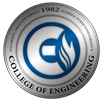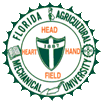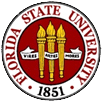The project at hand called for the design of an Ackerman steered robotic vehicle. The sponsor for this project is the Center for Intelligent Systems Control and Robotics (CISCOR) at the FAMU-FSU College of Engineering. The primary contact for CISCOR, as well as our faculty advisor, is Dr. Emmanuel Collins. Currently all of the robots used at CISCOR for controls research are based on skid steering, where direction of travel is changed by varying wheel speeds. These robots also have rigidly mounted wheels that when combined with skid steer, do not allow for rigorous all terrain travel.
To solve this problem, CISCOR tasked our group with the design and construction of an Ackerman steered robotic vehicle. The vehicle must have 4-wheel Ackerman steering. CISCOR has provided us with many of the components needed to complete the robot, including 4 Maxon motors for the individual wheels, and 2 more for the front and rear steering mechanisms. Due to the nature of the motors, the customer also specified that the vehicle must have a fully independent suspension. It was also decided that the scope of this project was to design the frame, steering, suspension, and all other mechanical components necessary for vehicle travel. The design of the electrical system and control programming however, is not within the goals of this group, and will be added in with CISCOR’s help.
Starting with suspension, several different concepts were generated for the vehicle. The chosen design was one that implemented a double wishbone independent suspension on all 4 wheels. Upon completion of the detailed design inclusive of all systems, analysis was done on significant systems to verify performance. A finite element analysis was done on the frame using Pro Engineer’s Mechanica module, while a complete suspension analysis was run using Adams Car software. The analyses resulted in favorable performance of our design under different stress conditions, and wheel travel.
Prototype fabrication and assembly was done with the help of the Physics Instrument Shop at Florida State University. This process proved to be challenging because of the detailed dimensioning and tolerance associated with a one of a kind machine such as this one. The final prototype is a stable platform for the robotics research CISCOR plans to use it for, however, due to some inherent design flaws, requires continued work before becoming fully functional. Overall, despite setbacks, the group and the customer are pleased with the resultant product.


